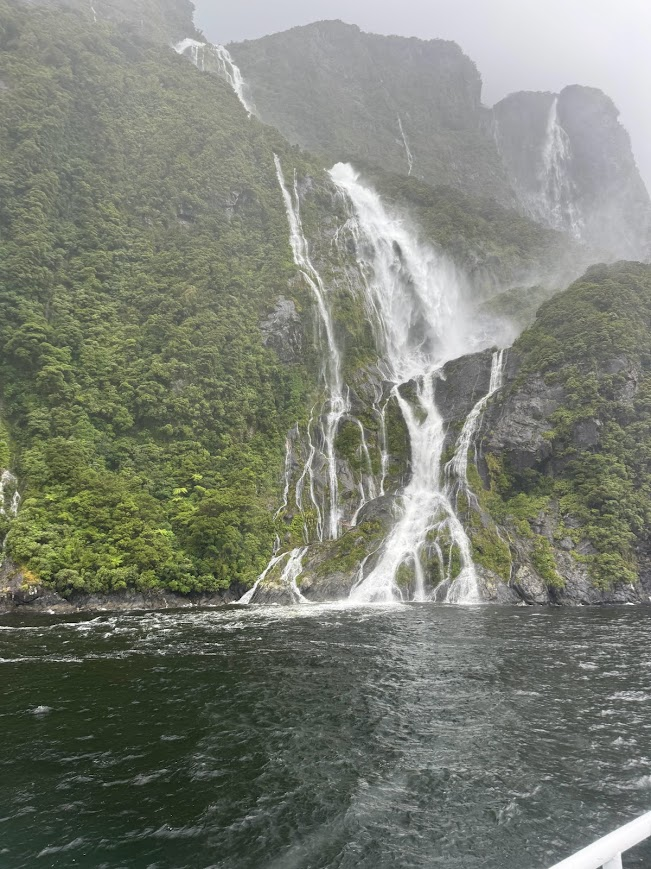Selcouth Chronicles Week 5
Hello family and friends! Welcome to week 5 of the Selcouth Chronicles.
Week 5: February 4th - February 10th
🚗Feb. 4 Te Anau->Milford Sound
🚗Feb. 5 Milford Sound -> Twizel
🚗Feb. 8 Twizel -> Kaikoura
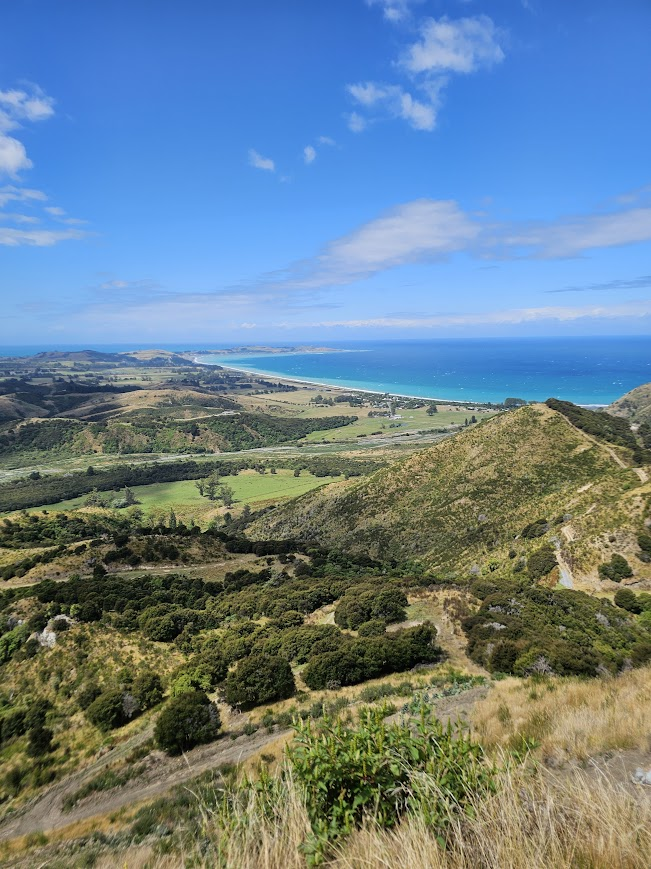
NEW ZEALAND
Highlights: Walking Milford Track, cruising Milford Sound, brilliant turquoise lakes of the MacKensie region, swimming in glacier water, swimming with dolphins, meat pies
Caitlin:
Water, water, everywhere: this week was a lesson in the many ways that water affects life in New Zealand. Our travels were largely shaped by water: first with an overabundance of it, then by dazzling punctuations of it in a dry landscape, and finally by the incredible variety of life sustained by it.
We started the week at one of my most anticipated stops in the country, Milford Sound. The sound is spectacular, and it’s one of the wettest places on earth, with more than twice as much rain as the Amazon rainforest! That means that there are more rainy days than clear ones, and while we weren’t lucky enough to come with sunshine, the rain creates gushing waterfalls everywhere that are pretty amazing. We were only able to spend one night at the Sound (I was lucky to grab the single night free at the only lodge there) so we drove in early to get in a four-hour walk on the Milford Track and an after-dinner nature walk on the first day. The next morning, we took the first boat of the day to explore the Sound from the water. The cruise went through the entire sound and even ventured briefly into the Tasman Sea. This was one of my favorite moments, because the sudden strong winds on the open sea were so strong they felt like they were going to blow us over, and the kids couldn’t stop laughing at the sensation. I have memories of being at Milford Sound as a kid, and it’s been quite a privilege to come back as an adult to enjoy it anew with Sean and the kids. It never ceases to awe.
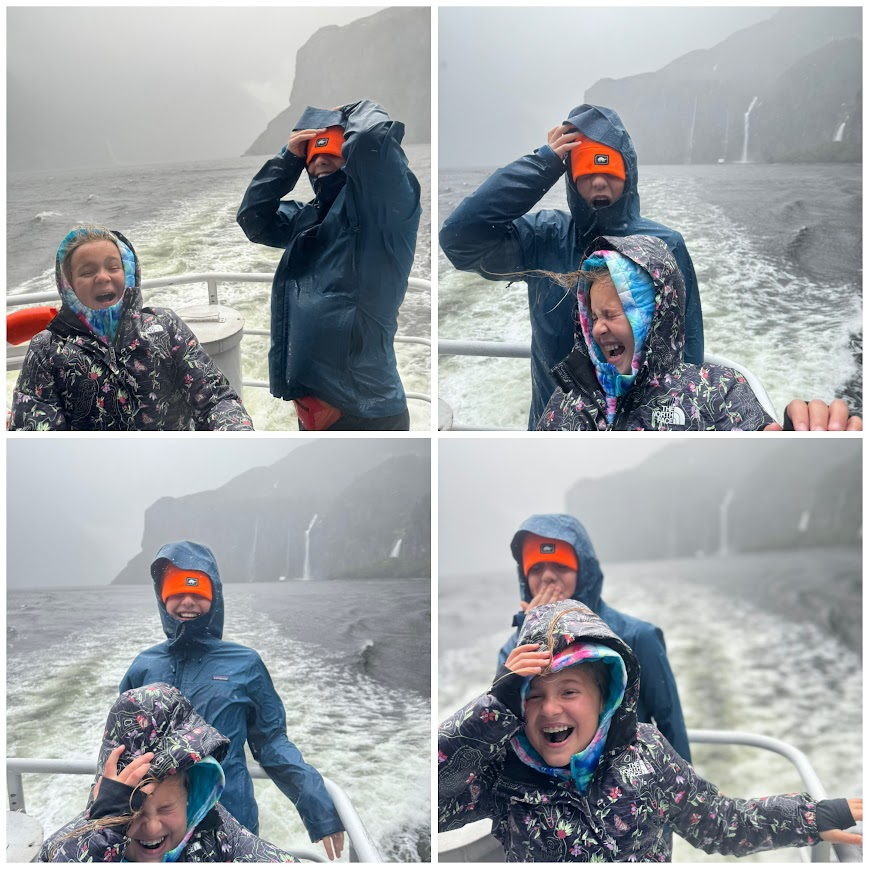
After Milford Sound we drove to a small town in the Mackensie Region called Twizel. Leaving the intense moisture of the Sound behind us, it was shocking how quickly we transitioned to an arid landscape. There were even fire danger warnings - it was almost like being back in California, with one huge exception. It seems that New Zealand has been more proactive than CA in conserving water, as the water levels in the many lakes and streams were full, while the surrounding landscapes remained unirrigated. And the lakes! Twizel is a short drive from Aoraki/Mount Cook, and the waterways are fed by active glaciers in the mountains. The glaciers act like bulldozers that grind the rocks to silt, and the resulting “glacial flour” is suspended in the water. Between the flour and the water itself absorbing different wavelengths of light, the end result is that what’s reflected back are intense blues and greens. The water is an incredible shade of turquoise, so much so that Abby and James insisted that they wanted to try swimming in it. I warned them that though glacier water may look tropical the temperature is anything but. In the end, we couldn’t resist the chance to swim in glacial waters, so we braved the cold and went for a dip!
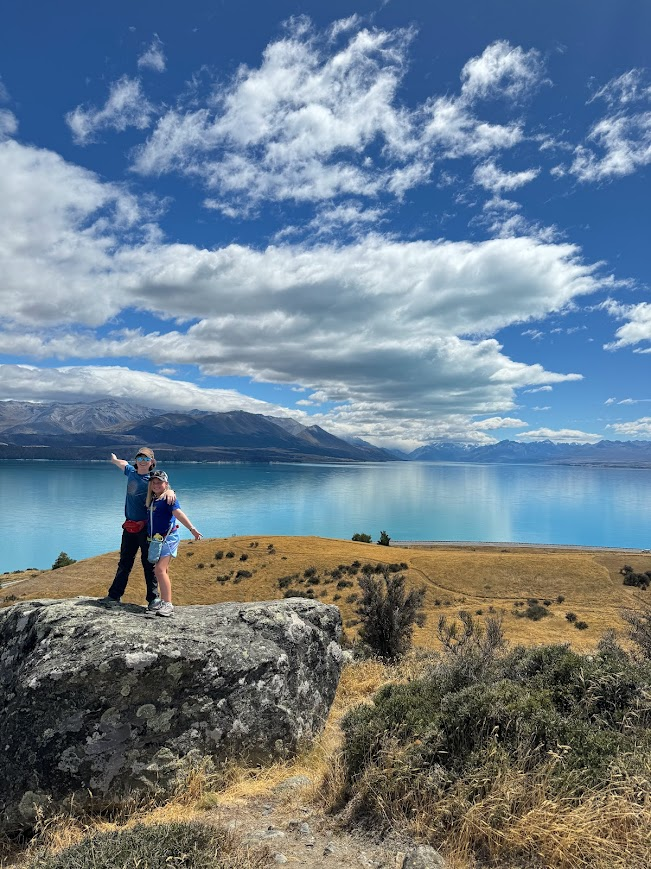
Our last stop this week was up the West Coast to the town of Kaikoura, chosen specifically for the water conditions. Here there is shallow water for about a kilometer until a sudden drop off the edge of the continental shelf. The deep ocean currents coming in collide with the edge of the shelf, resulting in a huge upwelling of food from the ocean floor. This, in turn, results in an abundance of year-round marine life in Kaikoura. This town is known for dolphins, whales, and seals. I have been looking forward to coming here because I’ve always wanted to swim with dolphins! I managed to fulfill that dream with our Dolphin Encounter excursion. We left on the 5:30am boat, which resulted in a few extra special treats: firstly, walking out our door and seeing a night sky so dark and clear that we could easily make out the Milky Way (incredible!), and getting to watch the sunrise over the ocean. We had incredible luck with the number of dolphins we found, and it was such an amazing gift to be in the water with these wild animals. We were swimming with Dusky dolphins, which have beautiful coloring, and are much more acrobatic than I anticipated - in addition to leaping out of the air they actually did flips, head over tail! We were also lucky enough to be visiting at a time when the mothers are introducing their offspring to the larger pods, so there were many pairs of mothers and babies swimming together. It was definitely an experience we’ll never forget!
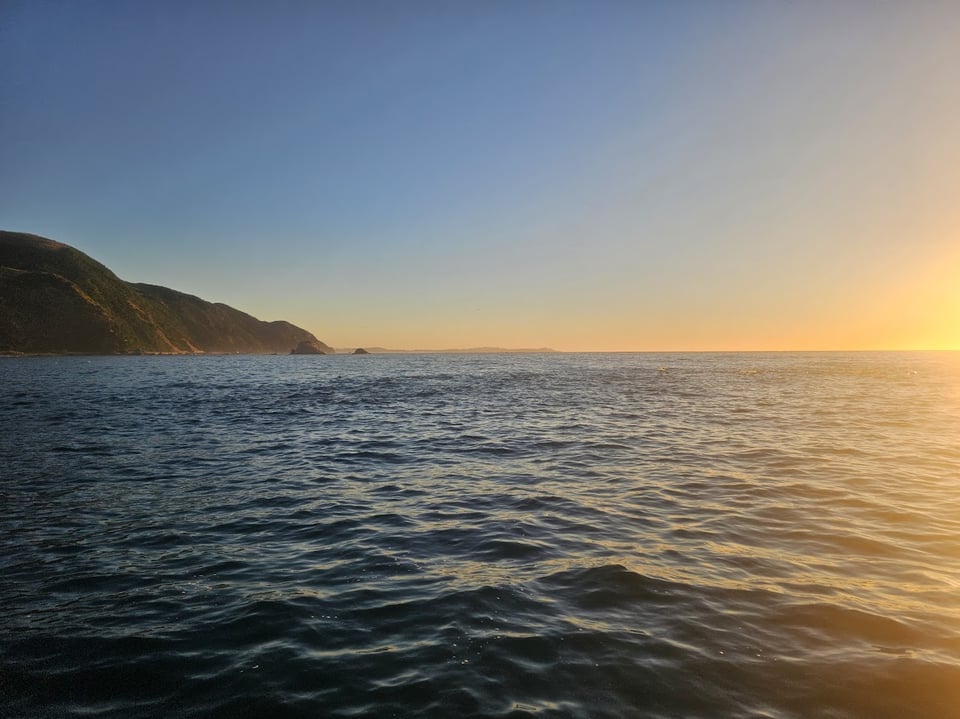
James:
New Zealand is full of exotic wildlife, and possibly the most fun thing to see is the birds🐦 in Milford Sound. Small, big, loud, quiet, naughty, they have them all, and you can see them if you walk the Milford Track, or at least just part of it. The Milford Track is one of the most famous walking trails in the world, snaking through Fiordland National Park to Milford Sound, covering 53.5 kilometers in total. This gives it an average hiking time of 4 days! Needless to say, we did not hike the whole thing - we only marched for two hours before turning around to make our way back to the trailhead.
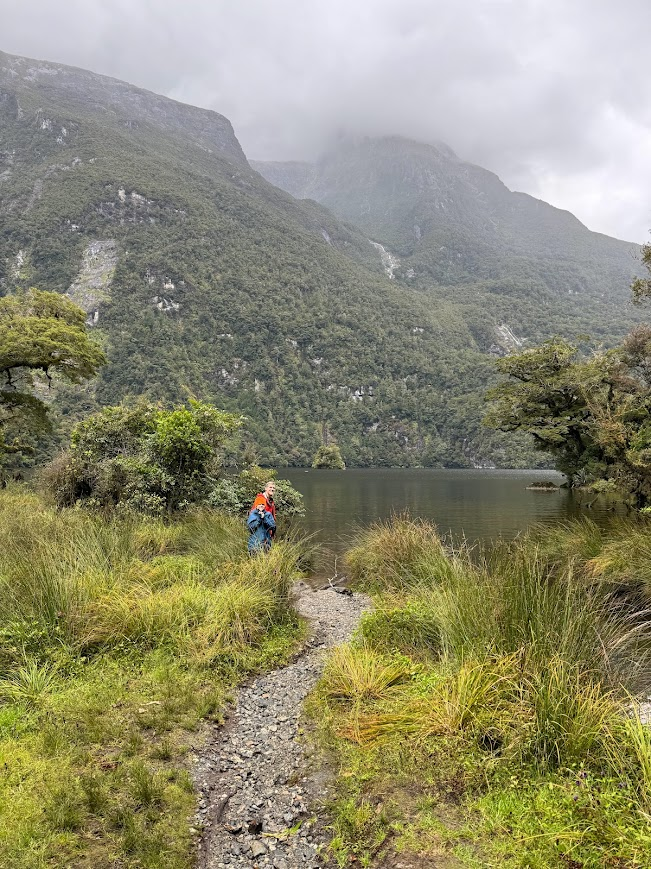
Fun fact about New Zealand’s native birds: of the 59 native species that live here, 16 are flightless. That’s about 27%! They’re flightless because there used to be no ground-based predators in this country. With no need to escape into the air, the usefulness of the ability to fly deteriorated and they evolved to live on the ground. Possibly the most famous example is the kiwi, the adorable and fluffy national bird of New Zealand. We didn’t see any on the hike, however.
What we did see (and please excuse my lack of bird name knowledge🙄) was a wood pigeon that we spotted twice, which looks like a prettier version of an actual pigeon, making me realize that NZ is so awesome that it has prettier pigeons than anywhere else. We also saw a mysterious green bird that I only got a quick glimpse of, so I really have no idea what it is, an adorable tiny brown bird that we saw quite a bit, as it seemed to be completely fearless, and lastly a very naughty parrot that nearly took Dad’s eye out with a dropped stick and did a little dance on his branch above us, which promptly earned it a very high place on my favorites list.
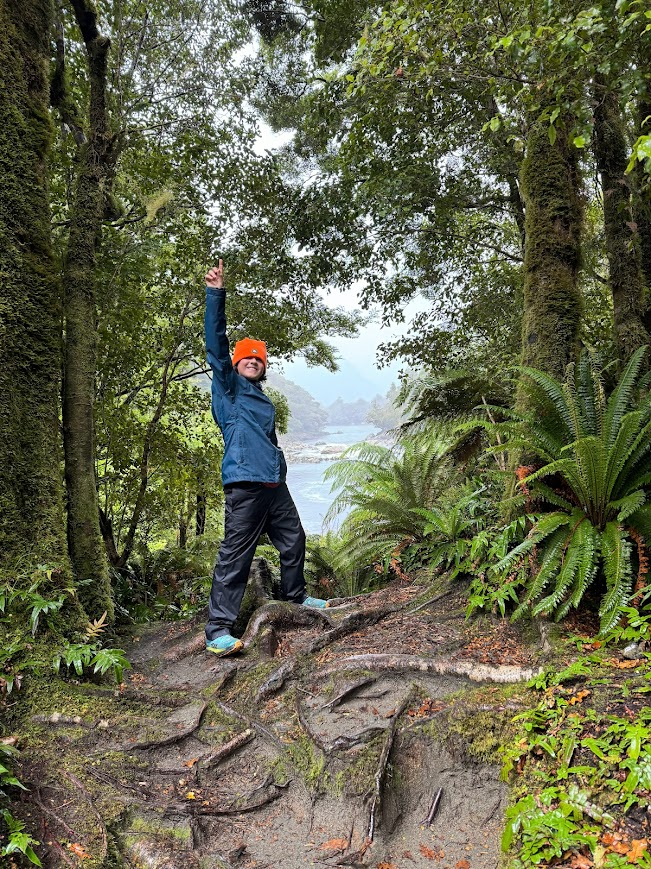
The hike itself was refreshing, beautiful, and had a waterfall at our turnaround point, but I really think that the birds deserved a part in this newsletter because they’re so much fun to watch.
Abby:
This week we were excited to visit Kaikoura, New Zealand. We were especially looking forward to the dolphin swimming here! Mom had been wanting to do this for a very long time, so we were happy that we could fit that into our visit. Unfortunately, there were only two spots left on the tour for the actual swimming, and you had to be a pretty confident swimmer in the open ocean, which, admittedly, I am not. 😐 So, we decided that Mom and James could swim with the dolphins while Dad & I stayed on the boat and watched.
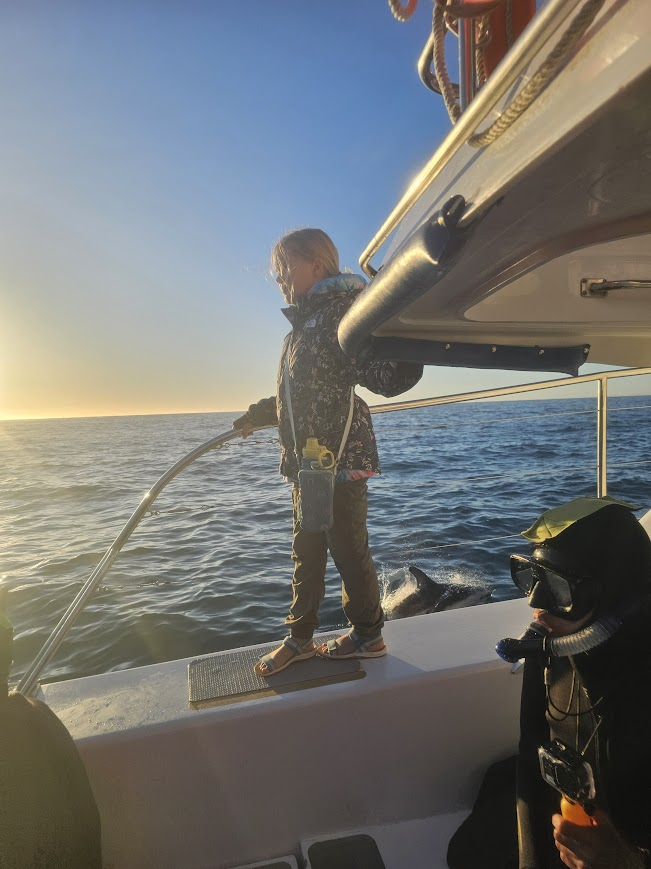
The only downside of the tour was the fact of having to, no, not wake up at 5 in the morning, but be there by 5am. We drowsily woke up and drove to the Encounter check-in. Mom & James got their wetsuits along with the other swimmers a little bit later. When they finished that, we had to watch a briefing for the swimmers. It was very clear that “The dolphins are not fed or trained at all! Do not be frustrated if they do not interact with you or don’t seem interested in you.” Afterwards, we got on a bus and drove to a small boat. The crew introduced themselves and we settled into our seats as they motored us to the open sea. The Skipper (Captain for smaller boats) informed us that Kaikoura is the first place in the entire world to see the sunrise every morning (because it’s so close to the international dateline). We were all pretty excited when Dad was potentially the first person in the entire world to spot the sunrise on Feb 10, 2024. Pretty cool!😎
When Dad left for a moment to check on Mom and James, I saw a few fins coming in and out of the water. All of a sudden, a dolphin leaps out of the water and does a somersault in the air. “Dad!! I see dolphins!” Dad comes running in and excitedly leads me to the back of the boat to see if we can see any more. And gosh, can we ever! Everybody else was led inside to get the rest of their snorkeling gear on, so Dad and I were one of the first to see the pod. No, not just a pod of ten or fifteen Dolphins, a pod of 300-400. It was so amazing to see the Dusky Dolphins flipping in the water and being all interested in the boat, going under it and around like it was a giant one of them. We marveled at the dolphins for a while until the horn sounded to indicate that the swimmers could get in the water with the dolphins. People scrambled to get into the water, and by the time everybody was in, the dolphins were as interested as ever. It was nice to see James and Mom with dolphins, especially hearing James making “Wow!” and “Oh my gosh!” sounds through his snorkel. Mom kept giving us thumbs ups and smiles.
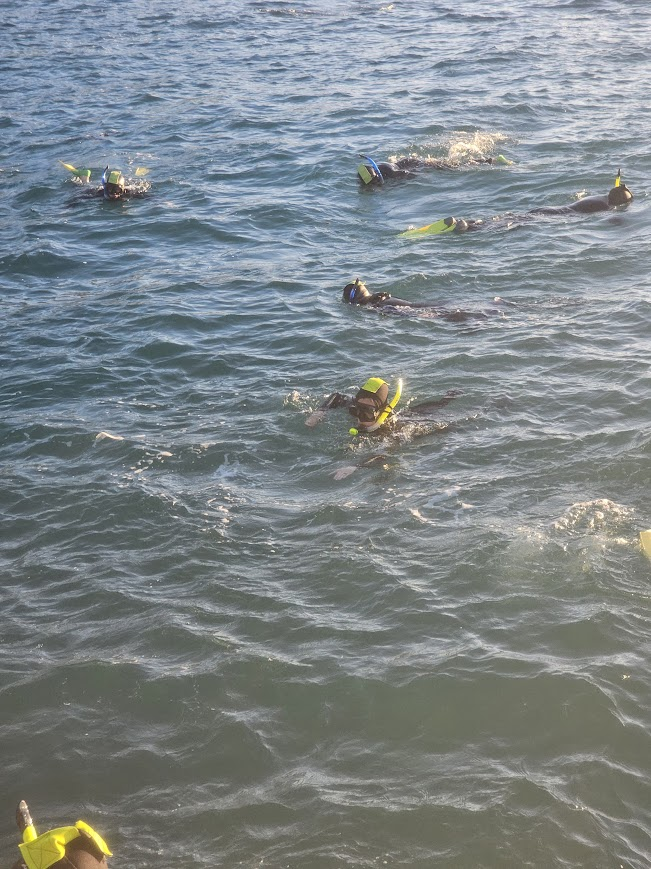
When the Duskies were done playing with the group, we went to go find another pod of dolphins, which, again, was successful. On that stop, we talked to one of the crew members, who informed us that we were pretty lucky to see this many dolphins in a group. Apparently, most of the dolphins that they see are in a hurry, and in smaller groups. Way smaller groups. Most of the time in the morning, she says, the Duskies are in a rush to form into big groups, so that the dolphins have safety in numbers, can more easily catch food, etc. Also, now is the time that baby Duskies are being introduced to these groups, so they can learn from the other older dolphins, so we saw lots of mom and baby pairs. 🥰 Some calves would try to flip in the air. It was easy to tell them from the others because of that, for they had quite clumsy take offs and landings.
It’s always nice to interact with nature and its animals and experience these amazing things firsthand. These things make you appreciate how lucky you are to live in a world where such incredible things are, and you have the privilege to experience it. I think that is partly the point of this trip, being able to realize how extremely lucky you are to have this fragile, majestic, stunning ball of soil, water, and lava.
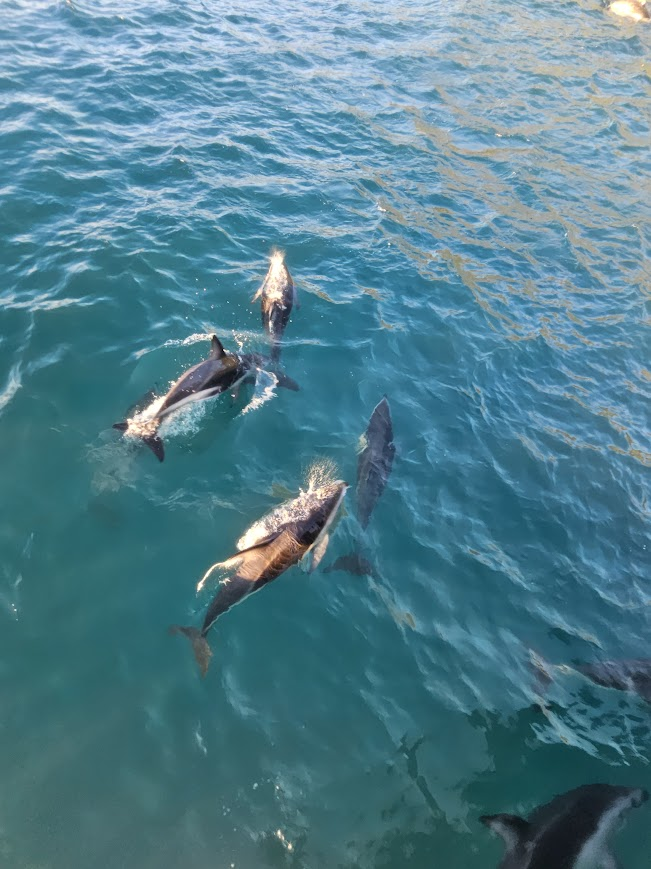
Sean:
For me, New Zealand had always been a place of far away wonder, full of amazing vistas seeded by images from Lord of the Rings and stories told. It was hard to believe that such a place existed. I can attest that in reality, it’s even more wild than I imagined.
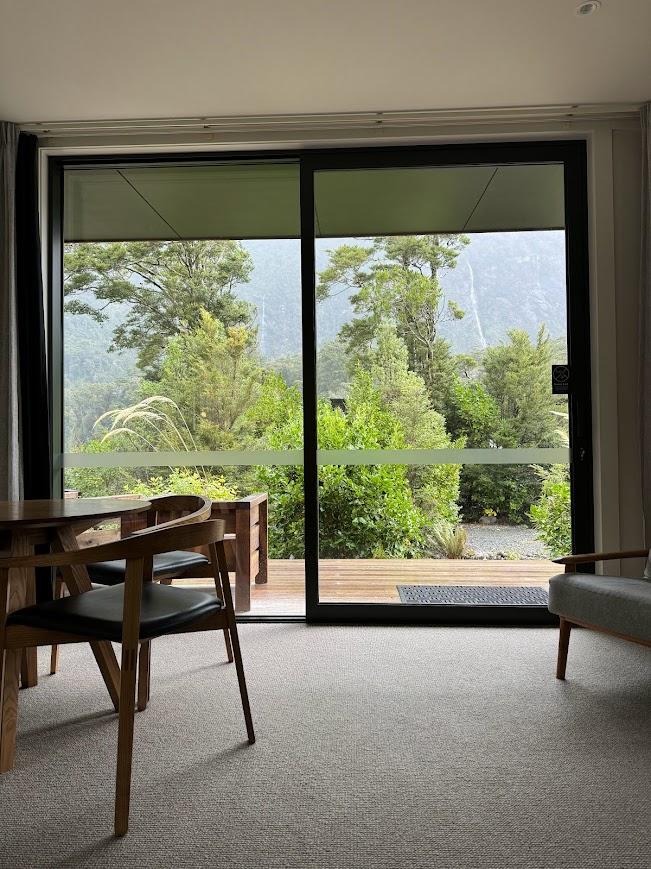
Milford Sound may be the best place to try and capture the prehistoric nature of New Zealand. Due to its position at the fjord created by a glacier, it has numerous characteristics that make it a unique place. The glaciers themselves carved out the land thousands of years ago, leaving behind lakes, rivers, and mountains that rise up out of the water. For instance, Mitre Peak, the tallest point in Milford Sound at 1,690m, has sides that fall straight into the sound. You can begin the climb to the peak directly from the water. This sheer rock wall formed by the mountains creates a barrier for the warm, moist water coming in from the ocean, and as it climbs over that wall, it creates enough rain to cause the average rainfall in the area to be 7 meters. Yes, enough rain to submerge a two story building. Per year.
The incredible deluge allows a rainforest to grow out of the rock face. To do this, the ecosystem relies on each “step” to build on each other. First, the lichen grows on the rock, giving it a reddish hue. Next, moss will grow over the lichen, feeding off the nutrients given off as it breaks down the limestone beneath. Ferns then begin to take hold, growing their roots into an interconnected web. This gives a place for seeds dropped by birds to grow into trees, and thus the rainforest is born. Due to the delicate balance, any disruption can cause tree avalanches that cleave out valleys in the forest, that then begin the cycle anew. This leads to bands of raw mountain, stripes of red where the process has just begun, and light greens where the ferns are dominant.
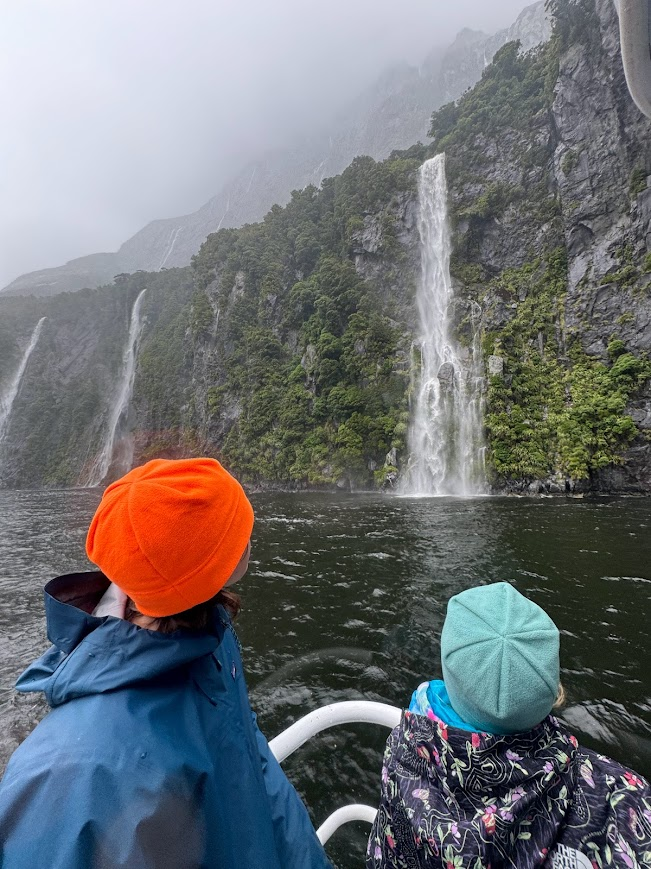
As the rain falls on the mountains, it also creates waterfalls coming off the sheer rock face. Thousands of these falls sprout from different locations as the water finds its way down from the peaks. Some waterfalls are permanent, fed by melting glaciers and mountain-top lakes, but many come and go depending on current rainfall. This constant flow of water down into the sound causes yet another interesting phenomenon. The freshwater, less dense than the saltwater it is landing on, floats on top, and can in certain times of year create a 10 meter freshwater layer on top of the saltwater. Due to the tannins in the plant life the water flows through, it turns dark, looking almost like tea. This blocks sunlight much more than normal, and causes the underlying sound to have an environment at 10 meters down more similar to deep ocean three to five times deeper. This is one of only four places in the world with the right mix of conditions to have this effect, called deep water emergence.
That was a lot of information, but a glimpse, I hope, of the strange natural wonder here. After getting the chance to walk and cruise through the Sound, it’s a place that will forever hold a unique place in my heart.
